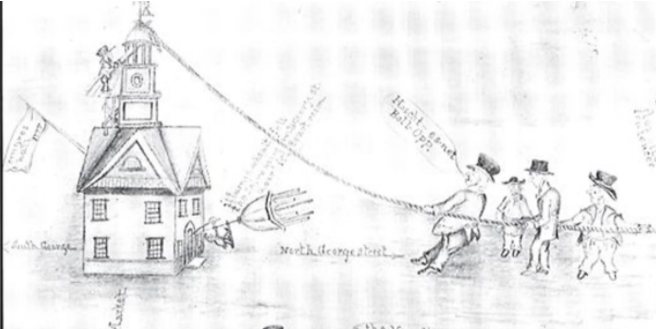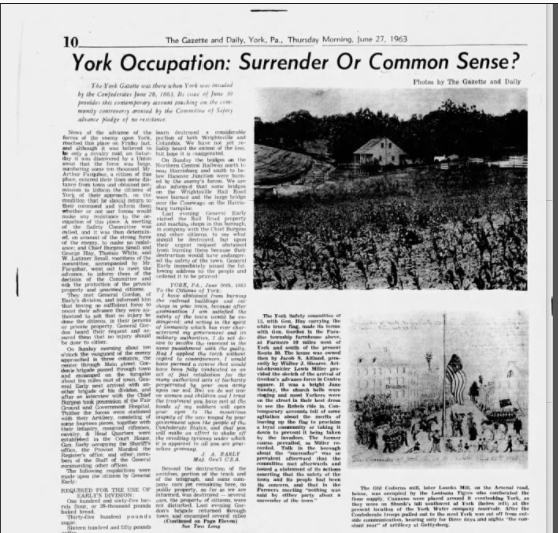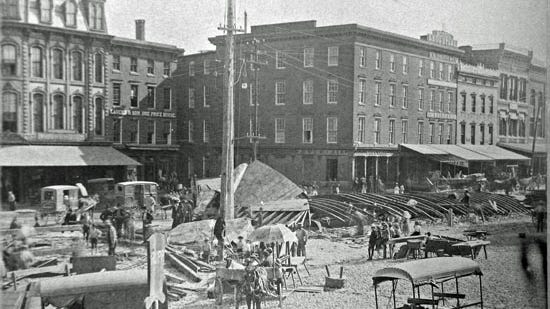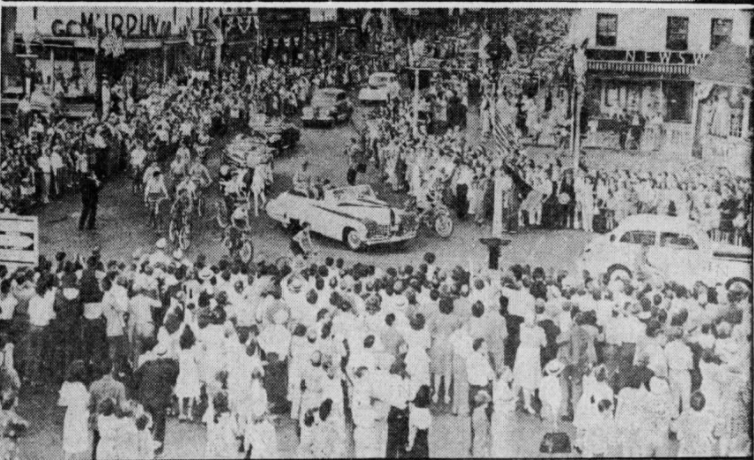Shaping events play out in York’s square
Continental Square
Market & George, York
The situation
Continental Square is in the heart of York, which is somewhere near the center of York County.
So in a spot where East meets West and North meets South and central to everything in the mid-Atlantic region, you’d expect stuff to happen. And it has happened – so often that we’re narrowing down pivotal events to one month – June.
Actually, we’re putting a finer point on it. The last half of June.
We note the return of minor league baseball on June 15, 2007, after an absence of 38 years.
And the coming of Tropical Storm Agnes in and around June 22, when this devastating storm dropped some 16 inches of rain, including 13.5 inches in one day.
But we’ll focus on a tight window of June 26 to June 30 in York’s square – formerly Centre Square – with this comment: If such major moments happen in such a short time on a tiny bit of land, imagine how many other events have played out within York County’s 900+ square miles. As we say with tongue only partly in cheek, all roads lead to York County and York is in the middle of the universe.
The witness

June 27, 1778 — The Continental Congress returned to Philadelphia after a nine-month exile in York. British troops had pushed the nation’s founders from Philadelphia. Congress arrived in York Town on Sept. 30, 1777, so Congress spent all or part of four seasons in this German peasant village west of the Susquehanna River. Continental Congress received news about a rare Continental Army victory in Saratoga, N.Y., and adopted America’s first constitution, the Articles of Confederation in York Town. Those achievements were enough to bring aboard France as an ally, and Congressional delegates agreed to treaties with America’s new friend the month before their late-June departure. This visit put York Town in the national spotlight and left a legacy still viewed with pride in York today.

June 27, 1863 — Jubal Early’s division of the Confederate Army stepped across York County’s western border with the Susquehanna River bridge at Wrightsville as a target. The invasion would cover most of the county, reaching the banks of the Susquehanna River only to watch the bridge burn. York’s surrender on this day launched a controversy that later subsumed the York-area’s considerable Civil War achievements. The York-area’s Civil War past was largely unexplored for most of the 20th century and, accordingly, so was the root cause of the war – slavery and racism.

June 30, 1887 — Opponents of market sheds in York’s Centre Square demolished the tottering structures. The demolition of the sheds symbolically marked the beginning of the slow decline of York’s historic agrarian economy and the early stages of what would become a burgeoning industrial marketplace and often random and unfettered land development. That spot in the center of Centre Square was no longer needed as an agricultural marketplace – market sheds had been there since York County’s earliest years. A cleared square would help people and goods to pass through there via trolleys and other conveyances, with the Industrial Revolution budding in York. But that remaining flagpole pulled together the county’s American Revolution and Civil War past: It staked the spot where Continental Congress legally created a Confederation – the Articles of Confederation. And marked the spot that sent clear signals to York’s late-June 1863 onlookers: As the invading Confederate Army lowered the flag, the Confederation was being rendered asunder. Those Confederates actually represented de-confederation. The nation had come apart.

June 26-27, 1945 — Gen. Jacob Loucks Devers returned in grand fashion to his hometown. A year before, the four-star general led the invasion of southern France shortly after the Allied D-Day landing in Normandy. V-E Day observances in May 1945 were subdued because fighting in the Pacific continued, but York residents used Devers’ June 26 return to let loose. They lined Continental Square and the rest of the long parade route as the general rode in an open vehicle, eventually speaking to a filled grandstand at the York Fairgrounds. He was the focus of a banquet at the Yorktowne Hotel later in the day. W.S. Shipley of York Corporation, leader of the York Plan defense manufacturing project that had gained international attention, sat at the head table with Devers. When Devers shook hands with Shipley, that grasp brought together the most feted local champions on the warfront and homefront. York County’s greatest warrior and industrialist represented those who fought with rifles and mobile cannons together with lathes and welding torches.
The questions
By design, the list compiled on this page reflects many milestones in York’s square over a period of just days. But clearly not all events in a history that goes back to 1741 are included. Just recently, in 2020, Continental Square hosted a peaceful Black Lives Matter protest. That happened in June, too – early June. What Continental Square events would you add to the list from any era? How do these events reflect the times?
Related links and sources James McClure’s In Continental Square: One spot. Same day. Different wars. Different legacy. McClure’s 1999 book: “Never to be Forgotten.” YDR photos.
— By JAMIE NOERPEL and JIM McCLURE




Pingback: Continental Square: York's gathering space from its beginning